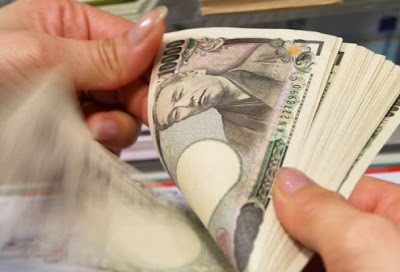The yen is off about 1% this month to bring the year-to-date decline to about 2.4%. It fell by 12.2% in 2022 and 10.3% in 2021. The yen rallied against the dollar for the five preceding years. Over that five-year period the dollar fell from around JPY124 to JPY99, but it was all done in H1 16, and after a rally at the end of 2016 and very early 2017 (to about JPY118.65), the dollar ground down around JPY101. This year’s dollar low was set in mid-Jan near JPY127.25 and the high was set in early March near JPY138, amid talk of higher for longer by the Fed and before the bank stress. The drop in US rates as the market responded to the stress, drove the greenback to about JPY129.65 in late March. It reached a high last week near JPY135.15. Within ranges the
Topics:
Marc Chandler considers the following as important: 4.) Marc to Market, 4) FX Trends, Featured, JPY, newsletter
This could be interesting, too:
Nachrichten Ticker - www.finanzen.ch writes Die Performance der Kryptowährungen in KW 9: Das hat sich bei Bitcoin, Ether & Co. getan
Nachrichten Ticker - www.finanzen.ch writes Wer verbirgt sich hinter der Ethereum-Technologie?
Martin Hartmann writes Eine Analyse nach den Lehren von Milton Friedman
Marc Chandler writes March 2025 Monthly
The yen is off about 1% this month to bring the year-to-date decline to about 2.4%. It fell by 12.2% in 2022 and 10.3% in 2021. The yen rallied against the dollar for the five preceding years. Over that five-year period the dollar fell from around JPY124 to JPY99, but it was all done in H1 16, and after a rally at the end of 2016 and very early 2017 (to about JPY118.65), the dollar ground down around JPY101.
This year’s dollar low was set in mid-Jan near JPY127.25 and the high was set in early March near JPY138, amid talk of higher for longer by the Fed and before the bank stress. The drop in US rates as the market responded to the stress, drove the greenback to about JPY129.65 in late March. It reached a high last week near JPY135.15.
Within ranges the exchange rate does trend. A simple five- and 20-day moving average cross over system is a reasonably good trend identifier. It has caught the big moves in both directions over since last spring with a minimum of false signals. Most recently, the five-day moved above the 20-day on April 11, when the dollar settled slightly below JPY133.10.
There are two important events this week. First is Tokyo’s April CPI. It does a very good job of leading the national figures, which are not due for a few weeks. Headline and core inflation (which includes energy) has fallen sharply, largely as a function of the govt subsidies. However, the measure that excludes fresh food and energy is making new cyclical highs. That brings us to the second important event, the BOJ meeting conclusion. Both events are on Friday local time. The first inkling into the new leadership’s thinking will be in the updated inflation and growth forecasts. A majority of economists surveyed see a pivot coming in June/July.
Japan’s Ministry of Finance report weekly portfolio flows (stocks and bonds). The main features recently are that after selling foreign bonds for the previous two weeks (~JPY1.3 trillion) and returned to the buy side (JPY500 bln). In the first 15 weeks of this year, Japanese investors bought JPY10 trillion foreign bonds. In the same period last year, they sold JPY4.7 trillion foreign bonds. Foreign investors have become very bullish Japanese stocks. They bought a large amount of Japanese equities for the second consecutive week. In fact, its purchases over the past two weeks were a record JPY4.13 trillion.
Warren Buffet has also broadcast that he was “weighing more Japanese investments” and some reports suggest he may issue a yen bond to raise the currency rather than buy it in the fx market.
In my work, over the past 6-9 months or so, I have approached it a bit differently. At current levels, the yen is about 41% under-valued on the OECD’s model of purchasing power parity. Typically, the OECD currencies are not more than +/-20% from fair value. This is not the only model of valuation out there of course, but it has advantages of being intuitively clear, a concept that many are familiar with (Economist magazine does it with Big Macs and Starbucks Cappuccino. And it gets to the value proposition. The yen is cheap for US based investors. This means revenues, wages, and, of course, companies themselves. It may take a few years, within a reasonable investment horizon, for the currency overshoot to correct, but it is not unreasonable to think it has begun. Imagine capturing even half of that over-valuation.
The median forecast in Bloomberg’s survey sees the dollar at JPY129 at the end of June, JPY127 at the end of September, and JPY124.50 at the end of the year.
A month ago, the median was for JPY130 at the end of June slightly higher, but then the market has turned more dollar negative and that aligns with expectations for a Fed rate cut. The end of September forecast a month ago was JPY128 and the year-end forecast was JPY126.00.
Speculators in the futures market has been treading water in recent weeks, with the next short position hovering around 54-57k contracts for the past four weeks. They have not been net long yen since March 2021. Since the end of Q1 21, the average net short speculative position has been about 65.2k contracts.
Tags: $JPY,Featured,newsletter

